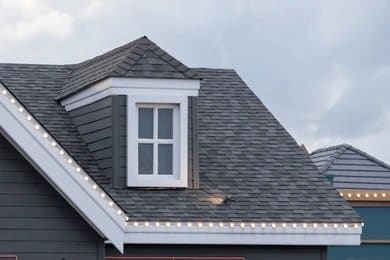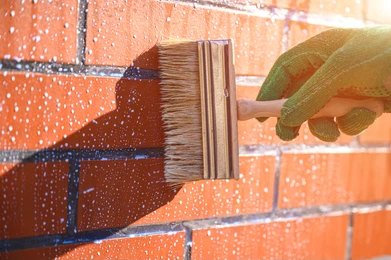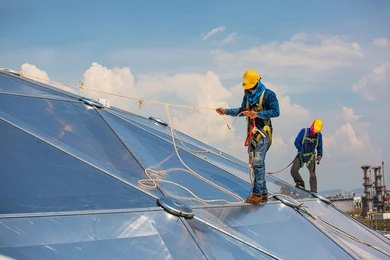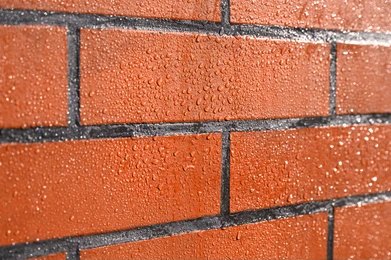Singapore’s monsoon season, typically spanning from November to March, is a time when heavy rainfall and high humidity can cause considerable damage to homes. Whether it’s the torrential rains or the prolonged damp conditions, homes across the island face the risk of water leakage, mold growth, and long-term structural damage. This is where nano waterproofing comes into play as an innovative solution to protect your home from the elements.
In this blog, we’ll delve into how nano waterproofing works, why it’s ideal for Singapore’s climate, and how it can help safeguard your home during the monsoon season.
What is Nano Waterproofing?
Nano waterproofing is a cutting-edge technology that uses nanotechnology to create ultra-thin, durable, and highly effective waterproof layers. These nano-coatings form a barrier that repels water, preventing it from seeping into surfaces such as walls, floors, and roofs. The nanoscopic particles used in nano waterproofing are designed to bond tightly to the surface, providing a highly efficient protective layer that lasts longer than traditional waterproofing methods.
This technology works by creating a surface that is highly resistant to water while still allowing the material to breathe. This breathability is essential because it helps prevent the buildup of moisture underneath the surface, which can lead to mold growth, rust, and decay.
Why is Nano Waterproofing Ideal for Singapore’s Monsoon Season?
Singapore experiences a tropical climate characterized by high humidity and heavy rainfall during the monsoon season. As a result, buildings in the city-state are often susceptible to water-related issues such as leaks, mold, and structural degradation. Nano waterproofing offers several advantages, making it the ideal solution to protect homes during this challenging time.
1. Superior Water Resistance
Nano waterproofing forms an invisible yet highly effective barrier against water. Unlike traditional waterproofing methods, which rely on thick, heavy layers that can degrade over time, nano coatings are resilient, ensuring that your home stays dry even during the most intense rainstorms.
2. Long-lasting Protection
The unique molecular structure of nano coatings ensures that they adhere strongly to surfaces, creating a long-lasting protective layer. Nano waterproofing doesn’t require frequent reapplication, and it can last for years without losing its effectiveness. Given the regular and heavy rainfall in Singapore, this is a significant advantage over traditional waterproofing solutions, which may wear off over time.
3. Prevention of Mold and Mildew Growth
Humidity is one of the biggest concerns during the monsoon season. If moisture seeps into your home’s walls or floors, it can lead to mold and mildew growth, causing health problems and ruining the structural integrity of your home. Nano waterproofing prevents water infiltration, thus mitigating the risk of mold and mildew formation.
4. Breathability
Despite being highly water-resistant, nano waterproofing coatings are breathable, allowing moisture vapor to escape. This is crucial in a humid environment like Singapore, as it helps prevent trapped moisture, which could otherwise contribute to mold, rust, and damage to structural materials.
5. Eco-friendly Solution
Nano waterproofing is environmentally friendly. The coatings do not release harmful chemicals or toxins, making them safe for both your home and the environment. This is particularly important for homeowners who want to ensure their home is not only protected but also sustainable.
How Nano Waterproofing Works
Nano waterproofing works through a simple yet effective process. The nano-coating is applied to the surface (such as walls, roofs, or floors) in a thin, even layer. The nanoscopic particles bond to the material’s surface, creating a hydrophobic (water-repelling) layer. These particles are so small that they are able to penetrate into even the tiniest pores of the material, providing a more complete and durable protective layer than traditional methods.
Once applied, the surface is no longer permeable to water. Rainwater, dew, or any other form of moisture simply beads up and rolls off the surface, preventing it from seeping into the material. This ensures that your home stays dry, and the risk of water-related damage is significantly reduced.
Areas of Your Home That Can Benefit from Nano Waterproofing
Nano waterproofing can be applied to various areas of your home, protecting them from the elements during Singapore’s monsoon season. Some key areas include:
1. Roofs
Your roof is the first line of defense against heavy rains. Nano waterproofing ensures that the roof remains water-resistant, preventing leaks and water infiltration into the interior of your home.

2. Walls
Walls, especially exterior ones, are highly susceptible to water damage. Nano waterproofing can protect your walls from rainwater, ensuring that they remain dry and free from water stains, mold, and mildew.
3. Basements
Basements are particularly vulnerable to flooding and water seepage. Nano waterproofing can provide a reliable solution to keep basements dry and prevent costly repairs in the future.
4. Windows and Doors
Even the smallest gaps in windows and doors can allow water to infiltrate, leading to mold and damage. Applying nano waterproofing can seal these gaps and provide enhanced protection.

5. Floors
Floors, especially in areas that are prone to flooding, such as basements and ground floors, can benefit from nano waterproofing. The coating prevents water from soaking into the flooring materials, which could otherwise cause swelling, mold, and deterioration.
Advantages of Nano Waterproofing Over Traditional Methods
While traditional waterproofing methods, such as liquid coatings or bitumen membranes, have been in use for years, they come with some drawbacks. These methods can be thick, cumbersome, and prone to wear and tear over time. Here’s how nano waterproofing outperforms traditional techniques:
1. Thin and Seamless
Unlike traditional coatings, which can create thick layers on the surface, nano waterproofing is incredibly thin and seamless. This allows the material to maintain its aesthetic appeal without affecting the overall look of your home.
2. No Disruptions
Traditional waterproofing methods often require extensive preparation, including removing old coatings and waiting for drying times. Nano waterproofing, on the other hand, can be applied quickly without disrupting your daily routine.
3. Cost-Effective in the Long Run
Though the initial cost of nano waterproofing may be higher than traditional methods, it offers long-term savings. Since the coating lasts longer and doesn’t require frequent reapplication, you save money on maintenance and repairs over time.
Frequently Asked Questions (FAQs)
Is nano waterproofing safe for my family?
Yes, nano waterproofing is safe for use in residential homes. It is eco-friendly and does not release harmful toxins, making it safe for both your home and the environment.
Can nano waterproofing be applied to all surfaces?
Yes, nano waterproofing is versatile and can be applied to various surfaces, including concrete, brick, wood, metal, and tiles.
Does nano waterproofing prevent mold growth?
Yes, by preventing water from seeping into surfaces, nano waterproofing significantly reduces the risk of mold and mildew growth.
How do I know if nano waterproofing is right for my home?
If your home is experiencing issues with water leakage, dampness, or mold, nano waterproofing can be an effective solution. For personalized advice, consider reaching out to a professional service like Secure Waterproofing.
Conclusion
During Singapore’s monsoon season, the last thing you want is to deal with water damage, leaks, or mold. Nano waterproofing offers a highly effective solution to protect your home from the harsh elements, ensuring that your walls, floors, and roof stay dry and secure. Its superior water resistance, long-lasting protection, and eco-friendly properties make it the ideal choice for homeowners looking to safeguard their property during the rainy months.
Don’t wait for the next heavy rain to damage your home. Contact a professional nano waterproofing service today, and ensure your home is fully protected for the long haul. For more information and expert advice, visit Secure Waterproofing.





